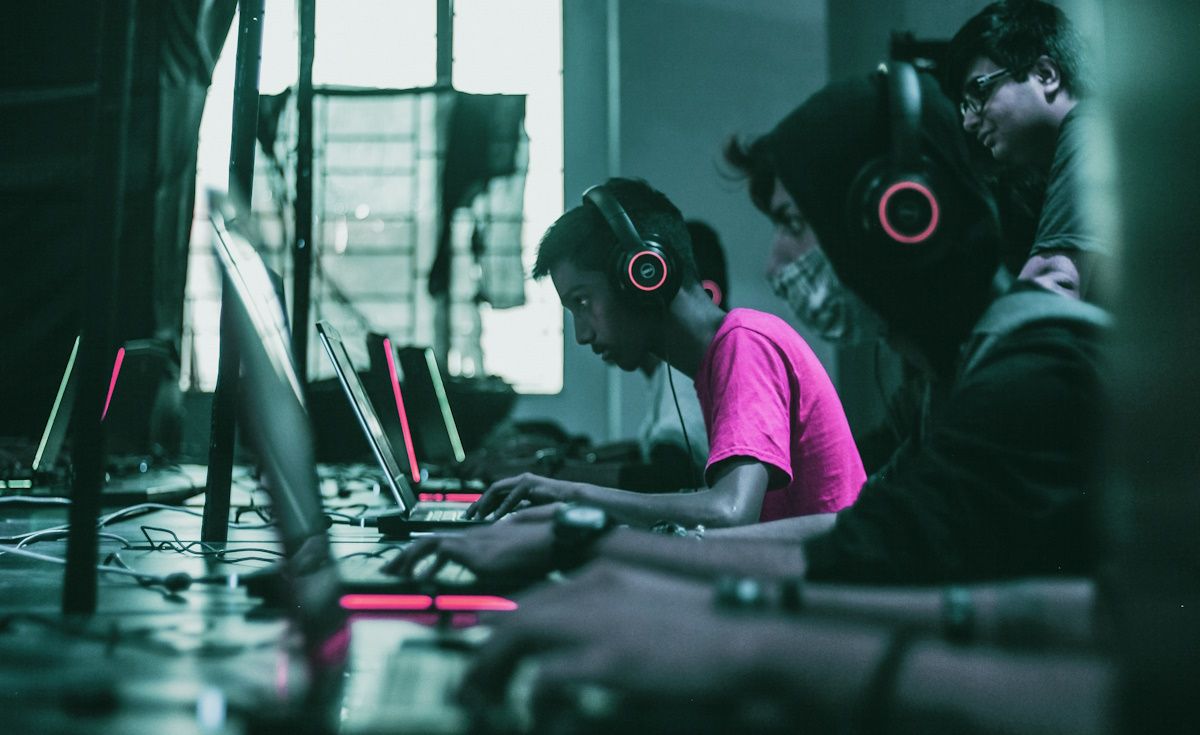
Cyberattacks on Gaming: Why the Risks Are Increasing for Gamers

Cyberattacks on Gaming: Why the Risks Are Increasing for Gamers
As we embark on another thrilling adventure through virtual worlds, fighting dragons, conquering galaxies, and outwitting our opponents, there’s a serious challenge lurking in the shadows—cyberattacks on gaming.
Like in the game world, where every level gets harder, and the stakes get higher, the realm of cybersecurity in gaming is evolving, and the risks are on the rise. From old-school role-playing games (RPGs) to fast-paced shooters, no game is safe from cyber threats.
Thus, it’s high time for gamers to take a pause in their quest for glory, jump into the world of gaming-related cyberattacks, and figure out the reasons behind the increasing risks.
Why Is the Gaming Industry an Attractive Target for Attackers?

With millions of players worldwide absorbed in their adventures, it’s no surprise that this digital domain has become a prime target for cyberattackers. But why is the gaming industry such an appealing target for these virtual vandals?
A Wealth of Personal Data
Personal data is the currency that powers the world of gaming. From your in-game achievements to your payment information, every bit of data is treasure for cybercriminals. Your login credentials, credit card details, and personal information are all easy targets. As the gaming industry stores a wealth of this valuable data, it’s an attractive loot chest for attackers.
Massive User Base
The appeal of gaming goes past borders, languages, and demographics. With a massive and diverse user base, gaming platforms provide attackers with a large playground to target. So, whether you’re a laid-back mobile gamer or an elite esports champion, you could be their next victim. The broader the audience, the richer the pickings.
In-Game Economies
Many games come with their own in-game economies, complete with digital currencies, rare items, and trading systems. These virtual riches often translate into real-world value. Attackers infiltrate these economies to steal, defraud, or manipulate them. Whether it’s a priceless two-handed sword or an epic mount, cybercriminals know the value of these treasures.
Hacktivism and Notoriety
Gaming platforms are fertile grounds for hacktivists and those trying to obtain notoriety. High-profile breaches of gaming giants can get widespread attention, making them attractive targets for attackers who want to make a statement or flex their digital muscles.
To make sure your sensitive data is kept safe, you should watch out for the most common causes of data breaches these days.
Passion
Gamers are a passionate lot. They can invest hours, days, and sometimes even years into their virtual worlds. This deep emotional connection can lead to a couldn’t-care-less attitude towards cybersecurity. Attackers exploit this enthusiasm, counting on gamers to let their guard down and overlook the best security practices in their quest for epic loot and legendary wins.
Which Attacks Are the Most Common?

Now that we know why the gaming industry is a top target for cybercriminals, let’s dive into the battlefield and explore the worst security threats for online gamers.
- Distributed denial of service (DDoS) attacks : Hackers flood game servers with an overwhelming amount of traffic, causing them to crash or slow down significantly. These attacks can disrupt online tournaments and leave gamers frustrated.
- Phishing attacks : Cunning cybercriminals often send deceptive emails, messages, or websites that mimic rightful gaming platforms, tricking players into surrendering their login credentials or other sensitive information.
- Account takeovers : Attackers use stolen login credentials, taken through phishing or data breaches, to gain unauthorized access to your account. This means they can then snatch your in-game items, and virtual currency, or even lock you out of your own account.
- Malware and cheat software : Some gamers turn to cheat software to gain the upper hand, but hackers are aware of this. They can create fake cheat programs packed with malware that can infect your system. These malware strains can steal personal data, disrupt gameplay, or even hold your files hostage until you pay a fee.
- Data breaches : Gaming companies store massive amounts of user data, personal and payment information alike. When these companies suffer data breaches, that data can end up in the hands of cybercriminals, putting your privacy and security at risk.
What’s Behind the Rise of Cybersecurity Challenges in Gaming?

The world of gaming has seen a remarkable transformation over the years. Gone are the days of single-player and offline experiences—today, online multiplayer games dominate the industry. This rapid rise of online gaming has brought with it a stack of cybersecurity challenges that affect gamers across the globe.
The Rise of Online Gaming
Online gaming has experienced explosive expansion, becoming a social phenomenon rather than a solitary pastime. The appeal of connecting with friends, challenging strangers, and immersing oneself in vivid virtual worlds has drawn millions of players into the online gaming universe. However, this spike in popularity has also attracted the attention of hackers waiting to exploit vulnerabilities in these expansive online ecosystems.
In-Game Economies and Digital Goods Are an Appealing Target
Many online games invite players to invest significant time and even real money into acquiring digital assets like in-game currencies, weapons, and characters. These digital goodies have real-world value, which makes them an attractive target for cybercriminals. The theft of in-game items can lead to financial losses and account hijacking, adding a layer of complexity to cybersecurity challenges in gaming.
The Human Element in Gaming
Gaming relies heavily on the human element. Gamers communicate with each other on a day-to-day basis, share personal information, and engage in social activities within their communities. This human element opens opportunities for cyberattacks such as social engineering, where malicious parties manipulate players into surrendering sensitive information.
Striking the balance between the need for social interaction and the imperative of cybersecurity is a constant challenge. The fact that humans are the weakest link in the cybersecurity chain only makes matters worse.
The Challenge of Balancing Security and User Experience
User experience is everything. Gamers expect seamless, uninterrupted gameplay, quick access to in-game resources, and minimal friction when connecting with friends. However, strong security measures can sometimes clash with these expectations. Striking the right balance between security and user experience is an ongoing challenge for both game developers and security experts.
The Role of Poor Security Practices in the Gaming Industry

In a world where gaming has transcended traditional limitations and evolved into an enormous digital ecosystem,poor security practices have found a home within the industry. These work as the chink in the armor, the unlocked backdoor through which cybercriminals make their grand entrance.
It’s astonishing how some forget the basics of cyber hygiene, failing to implement fairly simple security measures like strong passwords, regular software updates, and two-factor authentication (2FA). These can leave gamers and gaming companies vulnerable to cyberattacks.
Imagine a knight in the 21st century still wielding a rusted sword from the medieval era—gaming companies that rely on outdated software and systems are pretty similar. They’re both setting themselves up for failure. These legacy systems have vulnerabilities that hackers are more than willing to exploit, especially when security patches and updates are overlooked.
Much like a non-player character (NPC) wandering without aim in a virtual world, gamers who lack cybersecurity awareness are easy targets for phishing attacks. Meanwhile, gaming companies often fail to educate their users about the cyber risks, leaving them vulnerable to cunning tricks used by cybercriminals.
Just as alliances can be a double-edged sword in online games, companies sometimes forge partnerships with third-party providers without scrutinizing their security measures. Weak links in the supply chain can expose the entire ecosystem to threats.
On the other hand, gaming companies may hesitate to report security breaches, fearing damage to their reputation, which only adds fuel to the fire.
The Battle for Cybersecurity in Gaming Rages On
The rapid rise of online gaming, the allure of in-game economies, and the human element in gaming have all contributed to making gamers vulnerable.
While security measures have improved over the years, the challenges remain, and the combat is far from over. But with caution, collaboration, and a commitment to secure gameplay, the gaming community can continue to enjoy the adventures they love while staying one step ahead of the cybercriminals.
- Title: Cyberattacks on Gaming: Why the Risks Are Increasing for Gamers
- Author: William
- Created at : 2024-07-29 05:52:05
- Updated at : 2024-07-30 05:52:05
- Link: https://games-able.techidaily.com/cyberattacks-on-gaming-why-the-risks-are-increasing-for-gamers/
- License: This work is licensed under CC BY-NC-SA 4.0.



 CalendarBudget - Monthly subscription membership to CalendarBudget via web browser or mobile app. Support included.
CalendarBudget - Monthly subscription membership to CalendarBudget via web browser or mobile app. Support included. 


